Serrano chiles are small, spicy peppers native to Mexico, typically measuring 1-3 inches in length with a Scoville Heat Unit (SHU) range of 10,000–23,000—making them hotter than jalapeños but milder than habaneros. This guide covers everything you need to know, from identifying serrano chiles and their heat levels to cooking tips, recipes, storage methods, and buying advice, complete with real images for reference.
Table of Contents
- What Are Serrano Chiles?
- How Hot Are Serrano Chiles?
- Flavor Profile of Serrano Peppers
- 5 Practical Cooking Tips with Serrano Chiles
- Fresh vs. Dried Serrano Chiles: Which Should You Use?
- Buying Guide: Choosing the Best Serrano Chiles
- How to Store Serrano Chiles Like a Pro
- Popular Recipes Featuring Serrano Chiles
- Growing Your Own Serrano Chiles at Home
- Frequently Asked Questions About Serrano Chiles
- Conclusion
What Are Serrano Chiles?
Serrano chiles (Capsicum annuum) are small, slender peppers named after the mountainous regions of Mexico, particularly Puebla and Hidalgo, where they're often grown at high altitudes. Their name comes from "sierra," meaning mountain range in Spanish, which gives you a clue about their ideal growing conditions.
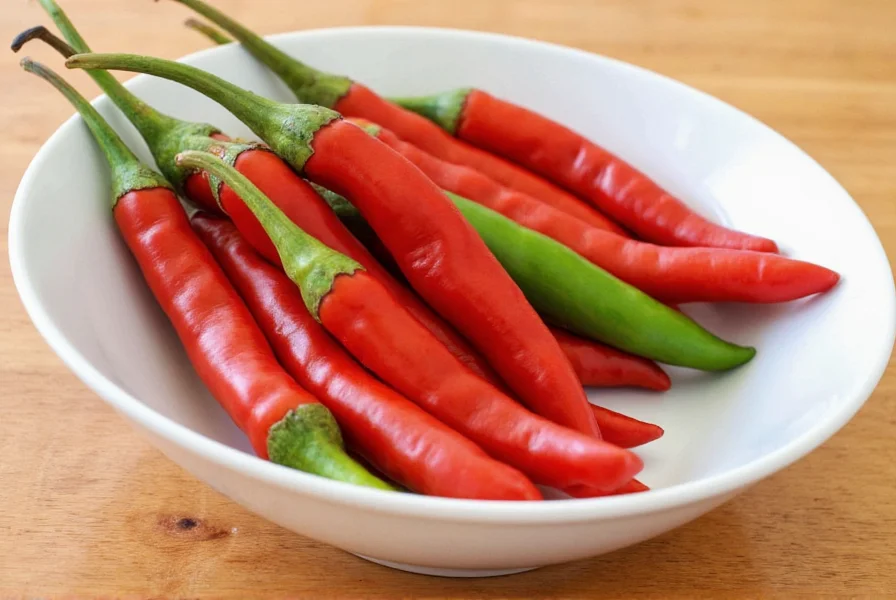
These chiles are typically harvested when green but can also be left to ripen to shades of orange, red, brown, or even purple. Green serranos are commonly used in salsas and sauces, while the riper ones bring a sweeter, more complex flavor to dishes.
How Hot Are Serrano Chiles?
The Scoville scale is the standard measurement for pepper spiciness. Serrano chiles fall between **10,000 to 23,000 SHU** (Scoville Heat Units), making them significantly hotter than the average jalapeño (which ranges from 2,500 to 8,000 SHU). However, the heat level can vary depending on growing conditions and maturity.
| Pepper Type | Scoville Heat Units (SHU) |
|---|---|
| Jalapeño | 2,500–8,000 |
| Serrano Chile | 10,000–23,000 |
| Cayenne Pepper | 30,000–50,000 |
| Habanero | 100,000–350,000 |
If you're looking for a moderate but noticeable heat with great flavor, serrano chiles are perfect. They're spicy enough to impress but not so hot that they overwhelm the palate.
Flavor Profile of Serrano Peppers
One reason serrano chiles stand out is their well-balanced flavor. Unlike some hotter peppers that lean heavily on heat, serranos offer:
- Fresh, grassy notes (especially when green)
- Subtle sweetness in mature, red varieties
- A crisp texture when raw
- Excellent oil solubility, making them ideal for roasting or frying

When roasted, serranos develop a smoky depth that enhances salsas, soups, and mole sauces. When dried, they take on a deeper, earthier character that works wonders in stews and dry rubs.
5 Practical Cooking Tips with Serrano Chiles
- Roast them for extra flavor: Toss whole serrano chiles in olive oil and roast under the broiler until charred. This brings out a nutty, smoky richness perfect for salsas.
- Use gloves when handling: Capsaicin oils can cause irritation, especially if you touch your face or eyes afterward.
- Remove seeds for less heat: Most of the heat lives in the seeds and inner membranes. Remove them if you prefer milder flavor.
- Add to guacamole for a zesty twist: A finely chopped serrano adds brightness and a gentle kick.
- Freeze them for later: Serranos freeze beautifully — just toss them whole into a freezer bag. No need to peel or chop first!
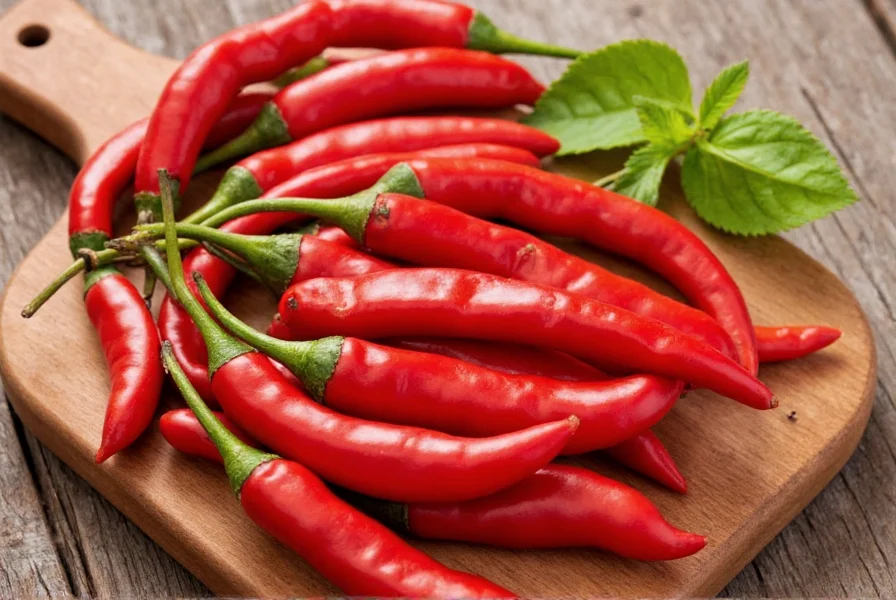
Fresh vs. Dried Serrano Chiles: Which Should You Use?
Both forms have their place in the kitchen. Here's how to choose:
| Form | Best For | Flavor Notes |
|---|---|---|
| Fresh | Raw applications, salsas, quick-cook recipes | Grassy, bright, peppery |
| Dried | Slow-cooked dishes, moles, spice blends | Earthy, smoky, more concentrated |
If you're making a quick pico de gallo, go fresh. If you're simmering a rich stew or grinding your own chili powder, opt for dried.
Buying Guide: Choosing the Best Serrano Chiles
Whether you're shopping at a supermarket or local market, here's what to look for:
- Bright color: Avoid dull or wrinkled chiles, which indicate age or dehydration.
- Firm skin: They should feel solid and slightly taut, not soft or mushy.
- Uniform size: Smaller chiles tend to be hotter; larger ones may be milder.
- Stems intact: Fresher chiles will have green, attached stems.
- No mold or soft spots: Especially important if buying in bulk or pre-packaged.
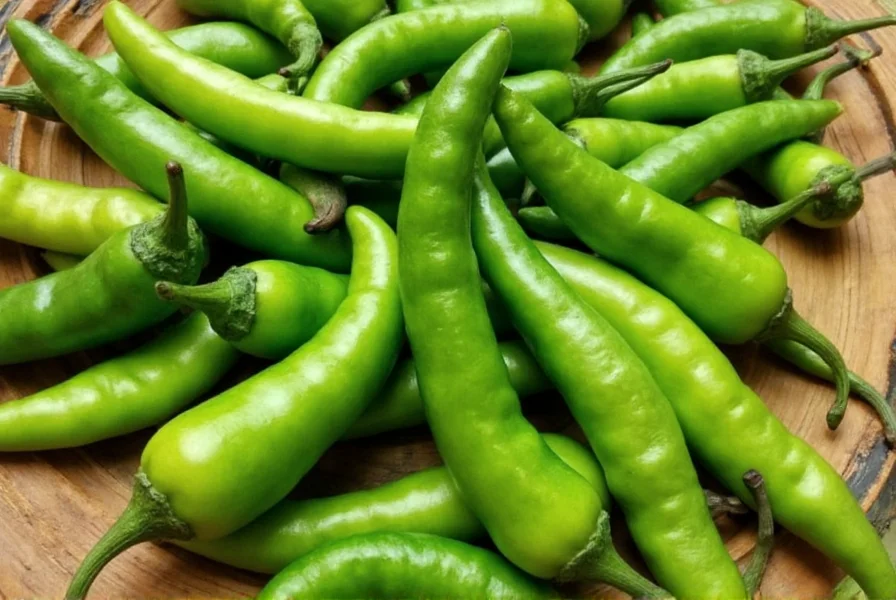
If you're buying dried serrano chiles, ensure they are pliable, not brittle. Cracked skins suggest they've been stored too long.
How to Store Serrano Chiles Like a Pro
To keep your serrano chiles fresh and flavorful for longer:
- In the fridge: Place unwashed chiles in a paper towel-lined plastic bag. Stored this way, they'll last up to two weeks.
- Freezer: Freeze whole chiles in a resealable bag. They retain most of their flavor and can be used straight from frozen.
- Drying: Thread chiles on a string and hang in a warm, dry area. Alternatively, use a food dehydrator or oven at low heat.
- Pickling: Preserve chiles in vinegar brine for a tangy condiment that keeps for months.
Popular Recipes Featuring Serrano Chiles
Here are a few ways to make the most of serrano chiles in your cooking:
- Salsa Verde con Serrano: Blend roasted serranos with tomatillos, cilantro, onion, and lime for a vibrant green sauce.
- Serrano Popcorn: Infuse popcorn kernels with finely diced serrano for a spicy movie-night snack.
- Chili Oil: Simmer sliced serranos in neutral oil with garlic and herbs for a multipurpose condiment.
- Spicy Chicken Tinga: Add chopped serrano to shredded chicken simmered in tomato sauce and spices for a hearty taco filling.
- Green Enchilada Sauce: Puree roasted serranos with green tomatoes, onions, and cumin for a rich, homemade enchilada sauce.
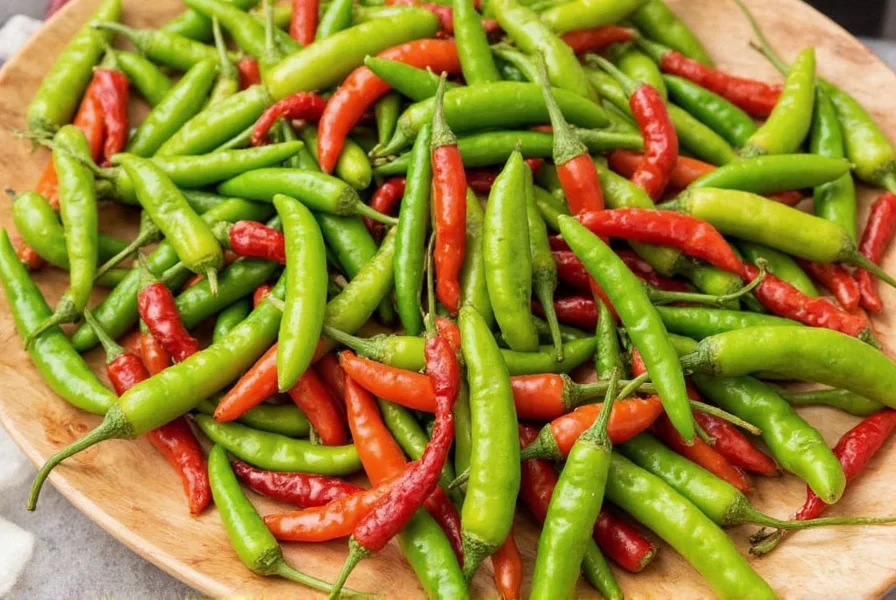
Growing Your Own Serrano Chiles at Home
If you're feeling adventurous, try growing serrano chiles in your garden or container. Here's how:
- Start indoors: Sow seeds 6–8 weeks before the last frost date.
- Transplant outdoors: Once soil warms and night temperatures stay above 55°F (13°C).
- Full sun: Choose a spot that gets at least 6 hours of direct sunlight daily.
- Well-draining soil: Amend with compost for best growth.
- Moderate watering: Keep soil evenly moist but not soggy.
- Harvest: Pick green chiles anytime or wait for them to turn red for sweeter, hotter fruit.
Frequently Asked Questions About Serrano Chiles
How can I visually identify serrano chiles?
Serrano chiles are small (1-3 inches long), slender peppers with smooth, glossy skin. They're typically harvested when green but can ripen to shades of orange, red, brown, or even purple. Compared to jalapeños, they're thinner (about half the width), straighter, and have a more elongated shape. Fresh serranos should be firm with bright color and green stems. When dried, they become darker and more brittle while maintaining their slender shape.
Are serrano chiles the same as jalapeños?
No. While both are Mexican chiles, serranos are smaller, thinner, and considerably hotter than jalapeños.
Can I substitute jalapeños for serrano chiles?
You can, but expect a milder dish. To compensate, increase the quantity or leave the seeds in.
Are serrano chiles healthy?
Absolutely! They're rich in vitamins C and B6, antioxidants, and capsaicin, which supports metabolism and heart health.
Do serrano chiles ripen after picking?
Yes, like most peppers, they continue to ripen off the vine. Place them in a sunny windowsill to encourage color change.
Are dried serrano chiles available year-round?
Yes, dried versions are usually stocked in Latin markets and specialty spice shops all year long.
Conclusion
Serrano chiles are more than just a spicy addition to your pantry — they're versatile, flavorful, and packed with personality. Whether you enjoy them fresh in salsas or dried in rich moles, these chiles elevate dishes with their unique blend of heat and brightness. With our handy serrano chiles images, you can easily identify them at the store or in your garden. Now that you know how to select, store, and cook with serrano peppers, it's time to experiment and find your favorite way to use them!
So next time you reach for a chili, skip the jalapeño and give serrano a shot. You might just discover your new go-to spice secret!

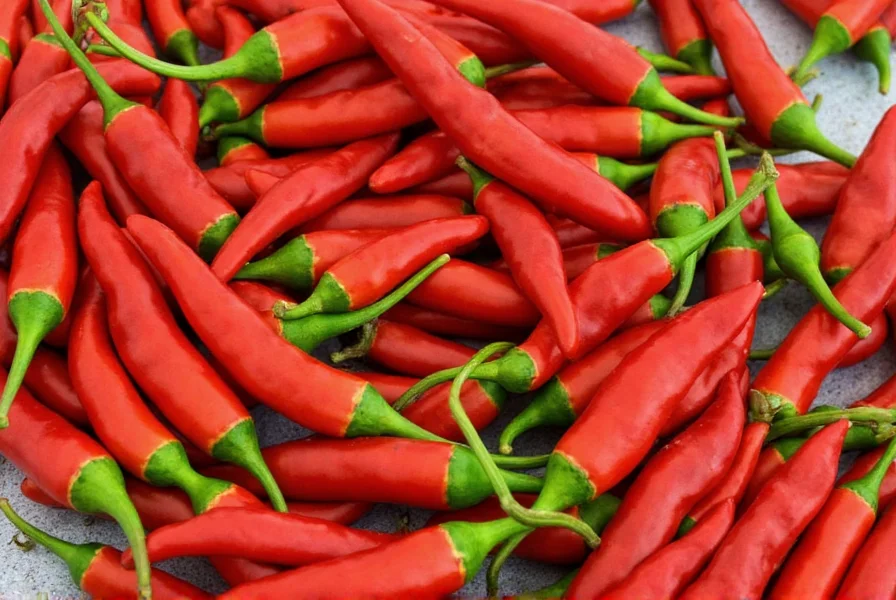









 浙公网安备
33010002000092号
浙公网安备
33010002000092号 浙B2-20120091-4
浙B2-20120091-4